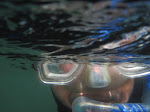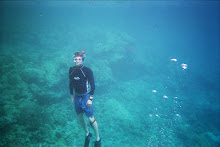"A Bolognese physician is to be presented tomorrow at his own petition having heard that I am the celebrated aquatic genius who swam across the Hellespont when he was at Abydos. I believe the fellow wants to make experiments with me in diving."
----Lord Byron to John Cam Hobhouse, November 26, 1810.
This entry, from the second volume of Byron's Letters and Journals, I had marked down (and recently found) in a notebook from 1995. Byron was justly proud of his aquatic feat, swimming from Sestos to Abydos across the strait, and he let everyone know about it: "I plume myself on this achievement more than I could possibly do on any kind of glory, political, poetical, or rhetorical." The swim took two tries, the first failing due to weather and rough water, and Byron took care to share his aquatic success in at least a dozen letters in the three or four months following the event and in a poem, presenting himself as a mere mortal in comparison with Hero's Leander. He told his mother, his friends, and the world, sure, but then wouldn't you?
Edgar Allan Poe, a fellow more athletic than most would imagine, was so sensitive of the spectre of Lord Byron that he set himself to outdo the English poet in more than letters. Poe never made his way to Turkish waters (despite the stories he told, the claims he made), but he gave his all in American rivers. I imagine that Poe's "A Descent into the Maelstrom" arose from his recollection of challenging those strong currents as he swam, always, upstream.
Sometimes, I toy with imitating Lord Byron's feat for my 50th birthday. Not too soon, but not too far off either. Maybe if I talk my friend Chad into joining me in the aquatic excursion. (He is a Byronist and an athlete, after all.)
I need to swim tomorrow. And the next tomorrow.
P.S. My favorite nonfiction book on the subject is Charles Sprawson's Haunts of the Black Masseur: The Swimmer as Hero, published by Pantheon Books in 1992. For fiction regarding open water swimming, I'm partial to Jenifer Levin's Water Dancer.
























